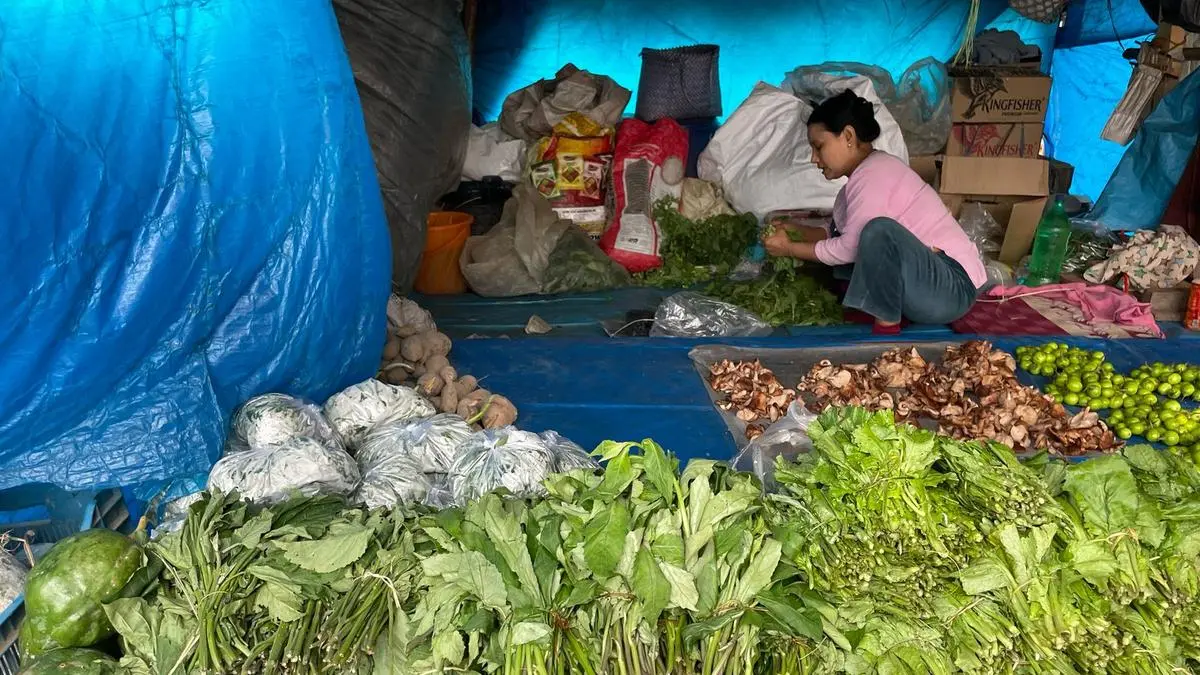April is a month on the cusp, when winter’s final breath meets the mounting intensity of summer. Predicting the weather in this season is like—as Assamese elders would say—understanding the mood of a woman: never quite within grasp. On April 8 this year, the heat rose steadily through the day. In Gandhi Market of Arunachal Pradesh, women vendors, many of them from the region’s indigenous communities, sprinkled water on baskets brimming with jongol sobji—a popular local term for wild edible bioresources, literally, forest vegetables—to keep them hydrated. The sun was relentless, but the women took it in their stride. They were taken aback by what happened next.
Reportedly, a group of Forest Department officials and police personnel, led by Nabam Regum, Chairperson of the Papum Pare District Biodiversity Management Committee, descended upon the vendors. They began seizing the wild herbs and vegetables, citing vague legal provisions, and admonishing the women for selling what they claimed were protected forest products. The operation, reportedly based on an order issued by Itanagar Capital Region Deputy Commissioner, Talo Potom, on March 27, left the vendors bewildered.
A video of the episode, raw and sharp in its injustice, went viral within hours—half a million views, echoing through WhatsApp groups and social media timelines across the north-east. The outrage was swift, widespread, and unified. The consensus was clear: this was a misadventure carried out in the garb of authority.
Embedded in daily life
The assumption that it was a Forest Department-led operation was natural. Who else, after all, patrols the invisible boundaries between legality and livelihood in the name of forests? However, a timely and well-drafted statement from the Principal Chief Conservator of Forests quickly revealed that the seizure—not the sale—of the bioresources had no legal basis. The title of the press release “Clarification on wrongful seizure of herbs and organic leafy vegetables and fishes from Itanagar market under the pretext of Forest/wildlife produce” accurately described the incident.
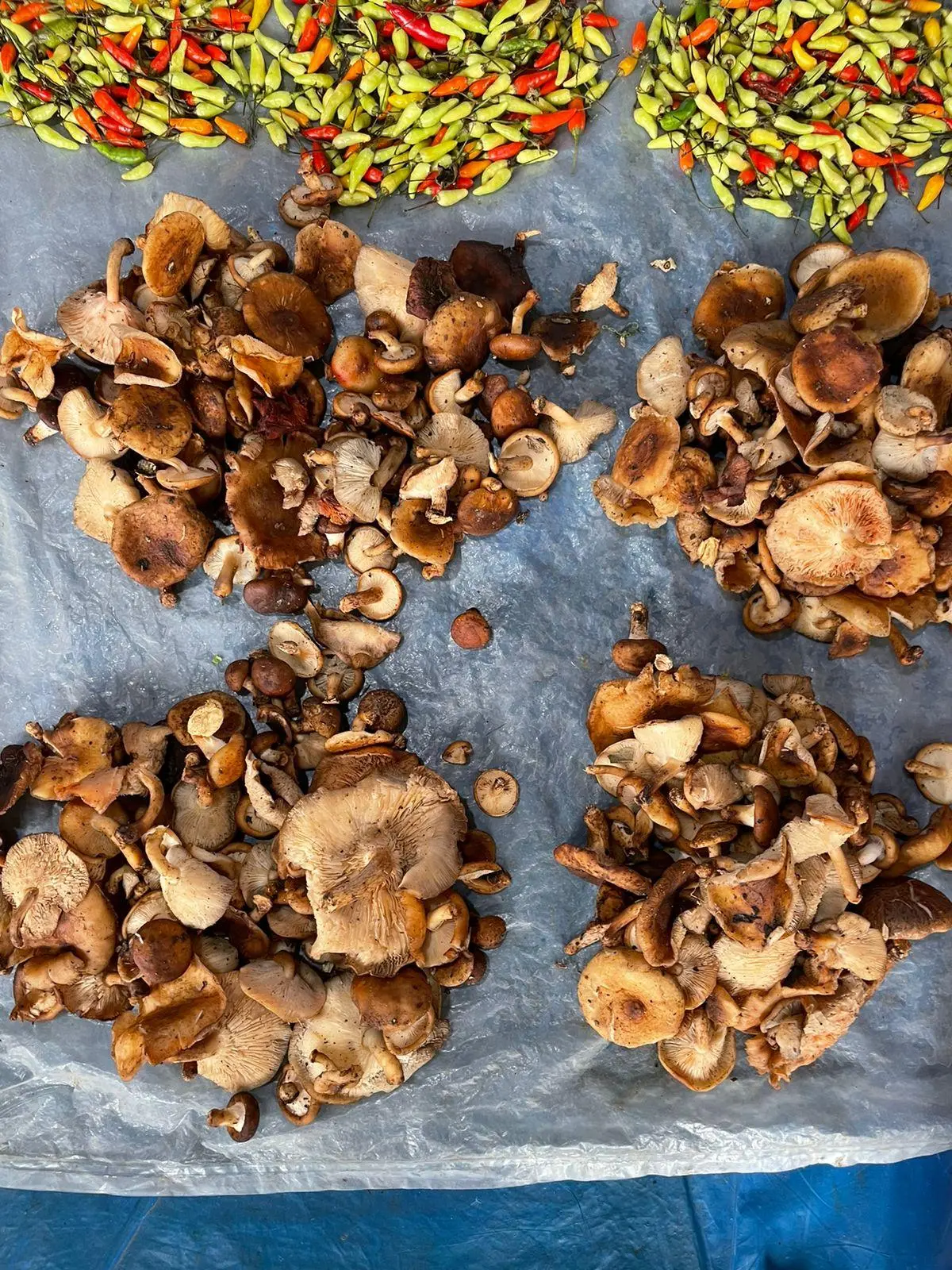
Shitake mushroom in Pasighat market.
| Photo Credit:
ATREE Siang
The spontaneity with which the situation turned into a fertile ground for viral memes and satire, indicate how wild bioresources are not mere commodities but are objects deeply embedded in the rhythms of daily life. The Biological Diversity Act (BDA), 2002, defines bioresources as “plants, animals and micro-organisms or parts thereof, their genetic material and by-products (excluding value-added products) with actual or potential use or value,” excluding only human genetic material. It is a broad, encompassing definition—and rightly so. It reminds us that the bamboo basket may not be a bioresource, but the “wild” bamboo and cane that are used to make it certainly are.
Within this framework, bioresources are typically divided into two broad categories: cultivated and wild. Anything that grows without active cultivation—that is gathered, not harvested—falls into the latter category. Yet the term “wild”, which is still widely used, is laden with misleading imaginaries: of untouched, remote landscapes, far removed from human presence. The reality in the northeastern hill States, however, is far more tangled.

Wild lychee in Pasighat market.
| Photo Credit:
ATREE Siang
Many so-called “wild” edibles flourish precisely because of human interaction—in jhum fields, in forested homesteads, in village commons. Jhum, or shifting cultivation and their fallows, is not merely about slashing, burning, cultivating, and abandoning the fields; it is also about care, management, stewardship. The cycle may vary from five to 30 years, but it is a rhythm of care, of retreat and return. What emerge from this matrix of cultivation and leaving the land fallow are plants like East Indian Glory Bower (Clerodendrum glandulosum), multiple species of fiddlehead ferns (Diplazium spp.), Indian prickly ash (Zanthoxylum rhetsa), wild nettle (Urtica dioica), and more. So, the spaces are not really “wild.” They are, in fact, very well-tended and well-managed to ensure continued supply of the most desirable and in-demand edibles.
Colonial hangover
Legal and scientific literature, however, persists in using colonial holdover terms like NTFP (Non-Timber Forest Products), MFP (Minor Forest Produce), and NWFP (Non-Wood Forest Produce). These terminologies continue to privilege “forest” as the only locus of “wilderness,” erasing the ecological productivity of grasslands, wetlands, rangelands, and other ecosystemsv. We have, for example no equivalent terms for other productive ecosystems, such as NTGPs (non-timber grass products) or MWPs (minor wetland products)—a linguistic gap that reinforces a conceptual one. Even so, in the bustling markets of Sikkim, Assam, and Arunachal Pradesh, what is sold as “wild” is often semi-cultivated. It regenerates through subtle human tending—the act of selective harvest, of leaving behind the mother plant, of choosing time and season wisely.

The ridin thread is a symbol of blessings, healing, and divine protection for the Adi people. It is prepared from the fibre of a plant, Pueraria lobata.
| Photo Credit:
ATREE Siang
Our ongoing research across multiple States affirms what many communities have always known: these are not extractive practices. They are sustained and managed through deep ecological knowledge gathered through many generations of reciprocal interactions with the species in question as well as with the ecosystems within which they thrive.
Also Read | How a Madhya Pradesh tribe’s symbiotic relationship with nature is in peril
In this light, the term “wild edibles” begins to feel not just imprecise, but also politically loaded. The phrase “uncultivated bioresources” better reflects the active, intelligent relationship that local communities have built with these species across centuries.
Trading in uncultivated bioresources is not illegal
Edibility is only one dimension of bioresource use. From kitchen utensils, firewood to ritual artifacts, uncultivated plants offer a vast material culture: bamboo, cane, climbers, reeds—shaped into tools, homes, stories. Even livestock is entangled in this web. Take the mithun—a semi-wild livestock weighing 600-1,000 kilogram—which is central to communities belonging to the Tani, Naga and many other indigenous groups across Arunachal and beyond the north-eastern region of India. They roam free and wild, feed on over 40 species of uncultivated plants, and are captured by their owners through elaborate strategies when they are required for ritual or “marking”. The importance of mithuns for the local communities and of their inherent ecological knowledge of wild edibles is well captured by the popular belief within Arunachal that humans’ diet and knowledge of safe wild edibles evolved through close observation of the mithun’s foraging habits, its choice of plants, and the vitality it displayed. In this intimate interspecies relationship, the mithun is both guide and guardian.
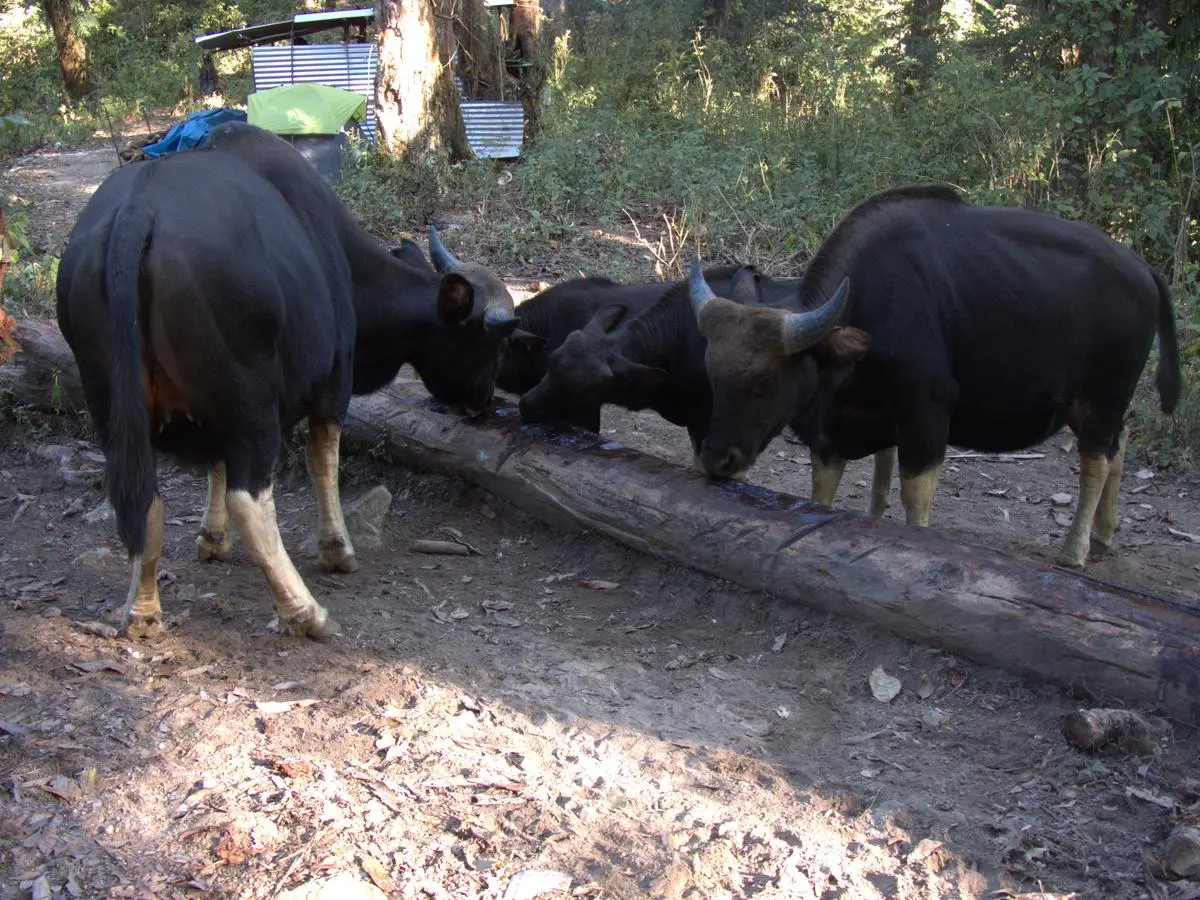
The mithun is central to the Abo Tani groups across Arunachal and beyond. Here the mithuns lick salt.
| Photo Credit:
ATREE Siang
So, is trading in uncultivated bioresources illegal? The short answer is “No”. The legal frameworks that govern such resources—the BDA; the Wildlife Protection Act, 1972; the Forest Conservation Act, 1980; and the Forest Rights Act, 2006 (FRA)—do not prohibit their collection or sale. The exception lies in protected areas under the Wildlife Protection Act, where resource extraction is barred unless communities have recognised rights under the FRA. In fact, several States actively promote trade in uncultivated bioresources—some even offer minimum support prices. The official statement by the Arunachal Pradesh Forest Department following the April incident made this crystal clear—it was not the sale of produce that was unlawful, but the seizure.
However, this is not an isolated event. Across the country, there are precedents of authorities overstepping their mandate. In Barwaha village, Madhya Pradesh, forest officials confiscated tendu leaves—used to roll beedis—from tribal women in 2017, despite the FRA recognising their right to collect and sell them. The problem lies not in the law, but in its misreading—often by those entrusted with its enforcement.
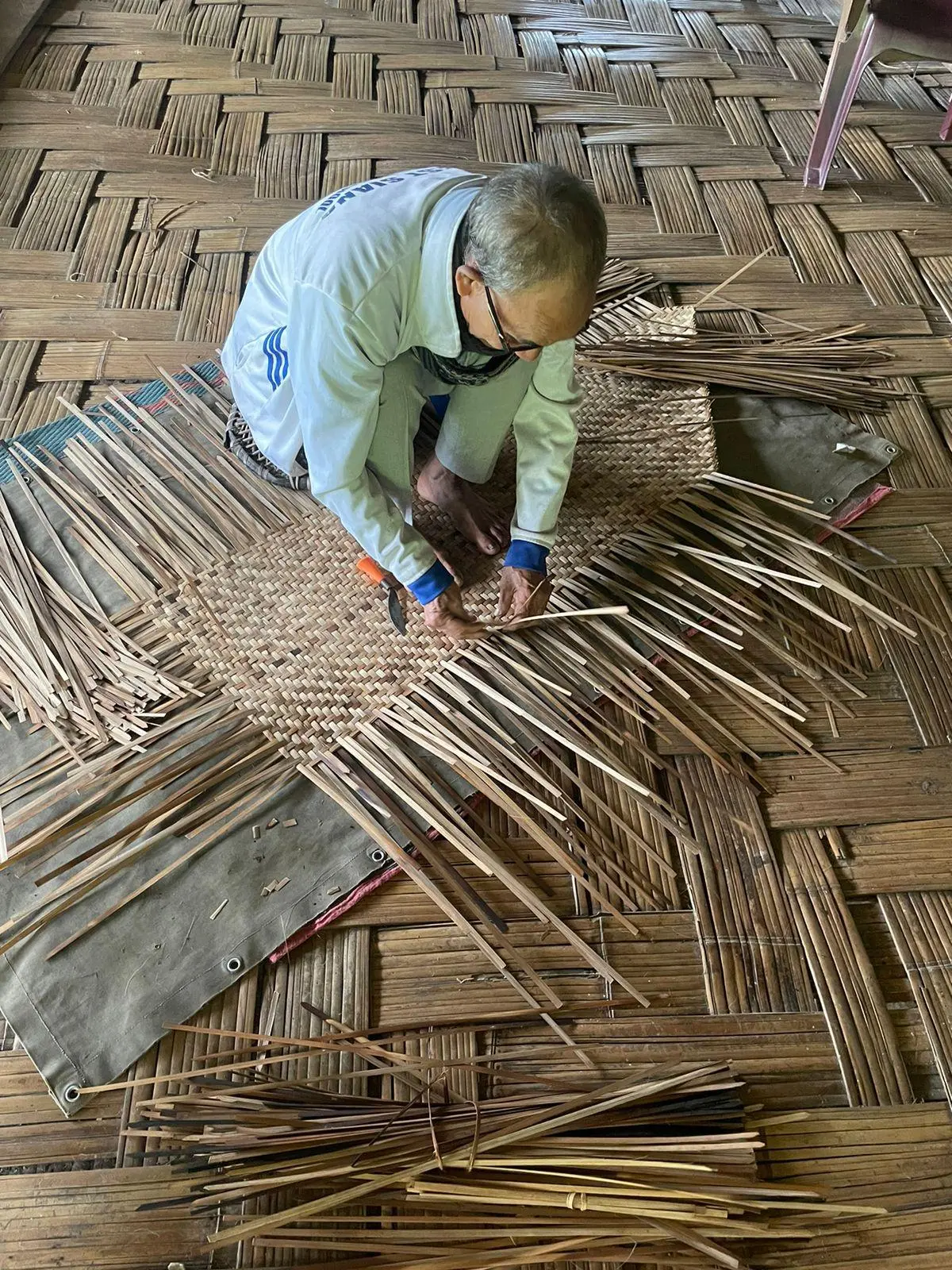
A bamboo basket or mat may not be a bioresource, but the “wild” bamboo and cane that are used to make it certainly are.
| Photo Credit:
ATREE Siang
The issue is not about the ecological fragility of forests or the endangerment of species—common arguments proffered by vigilantes but dismantled by our empirical data and research, as stated above. The key issue is the lack of clarity about conservation laws—laws that are often vague and open to interpretation. This ambiguity enables actions that may unintentionally harm people who depend on forest-based livelihoods. In most cases, the axe of such misplaced vigilantism fall on women vendors and traders of “uncultivated bioresources.”
Across the country, vendors primarily dealing in uncultivated bioresources are predominantly women. Within bigger and older markets of the north-eastern region, it is quite common to see women vendors pushed to the periphery, often sitting in temporary sheds or along the road, on footpaths, etc., leading to the market. In a sharp contrast, most vendors of cultivated vegetables such as tomato, potato, brinjal, etc., are men and often deal from permanent stalls within the market.
Women preserve traditional knowledge
Traditionally, women hold the generational knowledge about identifying, harvesting, and managing these resources within both natural and human-influenced ecosystems while men are more involved in fishing, hunting, or wage labour outside the village.
In earlier times, wild edibles were primarily gathered and consumed within the community. As rural populations migrated to towns and cities in search of employment and to fulfil emerging consumerist aspirations, traditional ecological knowledge declined.
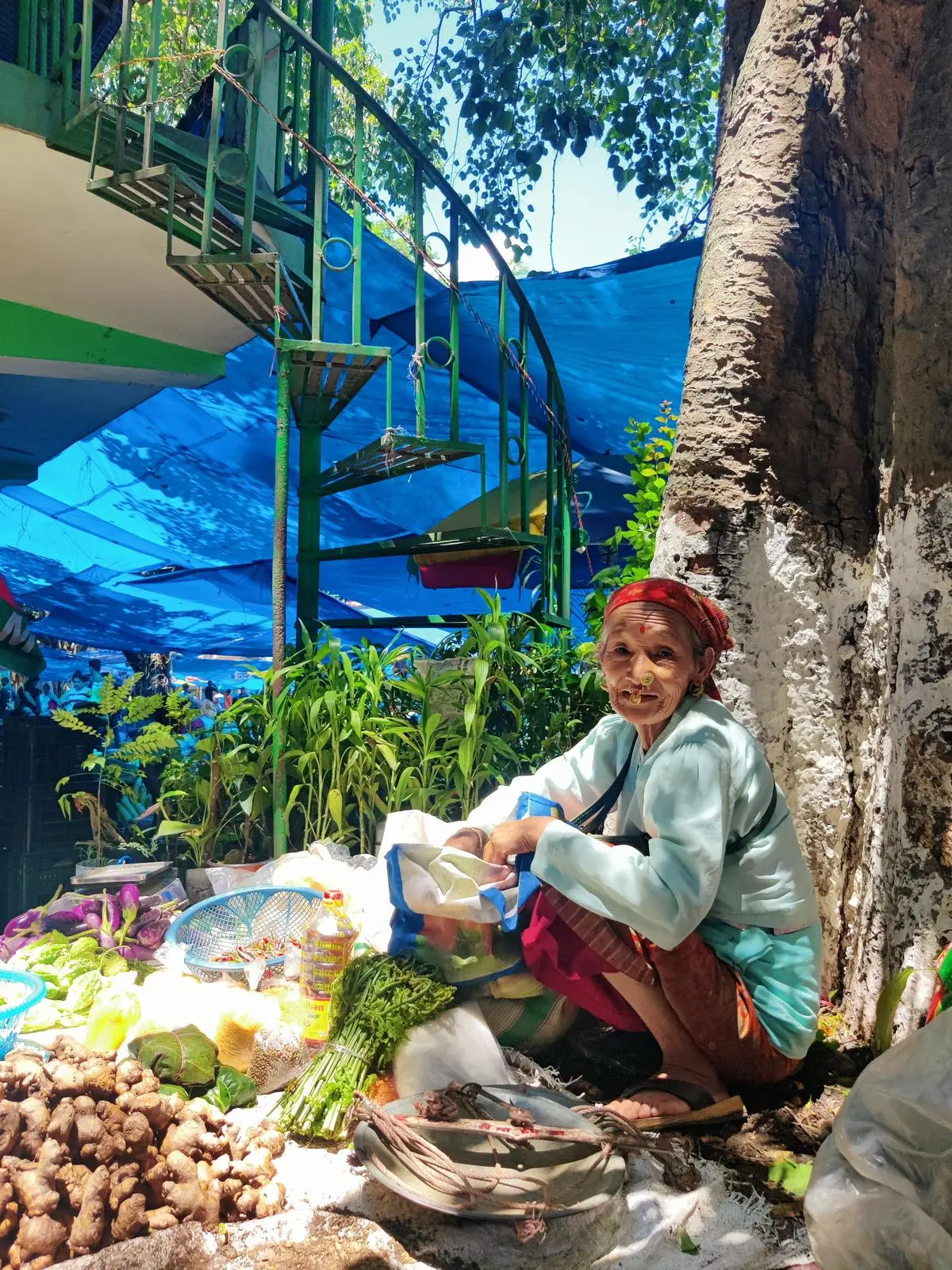
Amidst the bustle of “haat ko din”, the local term for weekly markets in Rangpo, Sikkim, Boju (80) sells several species of uncultivated bioresources in her own corner underneath a peepal tree. She has a story to tell for each of her bioresources.
| Photo Credit:
Deeke Doma Tamang
Over time, people lost the knowledge and forgot the skills required for successful foraging of wild edibles. But what they did not forget was the taste of their uncultivated bioresources-dominated food plates, fuelled by strong cultural memory and sensory connection to such diets. So, they yearned for it. The yearning, especially among the diaspora communities in larger towns, created a thriving market for jongol sobjis.
Also Read | Why organic food matters
Meeting this demand requires a high degree of initiative and entrepreneurship. Women forage in remote forest patches, often beginning their work as early as 2 am, combining ecological knowledge with strategic planning and physical endurance. They organise transport, often relying on the very first shared Sumo taxi of the day—a crucial public transport option in mountainous regions—to reach town markets on time. These vendors operate with minimal institutional support, responding directly to consumer demand, managing supply chains, and navigating changing forest access regimes. Their work reflects both subsistence-based tradition and adaptive enterprise.

Dried fish being sold in an Arunachal market.
| Photo Credit:
ATREE Siang
Rather than recognising and supporting this hybrid model of ecological entrepreneurship, enforcement practices shaped by misinterpretations of conservation regulations have increasingly criminalised it. Women vendors and their markets need to be enabled, empowered and celebrated because they not only trade in “uncultivated bioresources” but also sustain a lineage of taste, memory, and resilience. Yet, conservation vigilantism, emboldened by legal ambiguity, targets these women while the real devastators—illegal loggers, extractive contractors—stay untouched.
What can be done here? Rights awareness must be strengthened. Organisations like the Arunachal Pradesh Women’s Welfare Society, local trade bodies, and rights-based conservation groups must collaborate to create accessible guides that inform women vendors of their entitlements, the legal pathways available to them, and what to do in the face of harassment. Most importantly, we must shift the conversation from criminalisation to celebration, from suspicion to solidarity. The women who bring jongol sobji to market are not the problem—they are the answer. They remind us of what sustainability actually looks like, and how deeply culture and ecology are intertwined.
Let us not punish them for preserving what the rest of us have forgotten.
Rajkamal Goswami is a Fellow-in-Residence at Ashoka Trust for Research in Ecology & the Environment.
